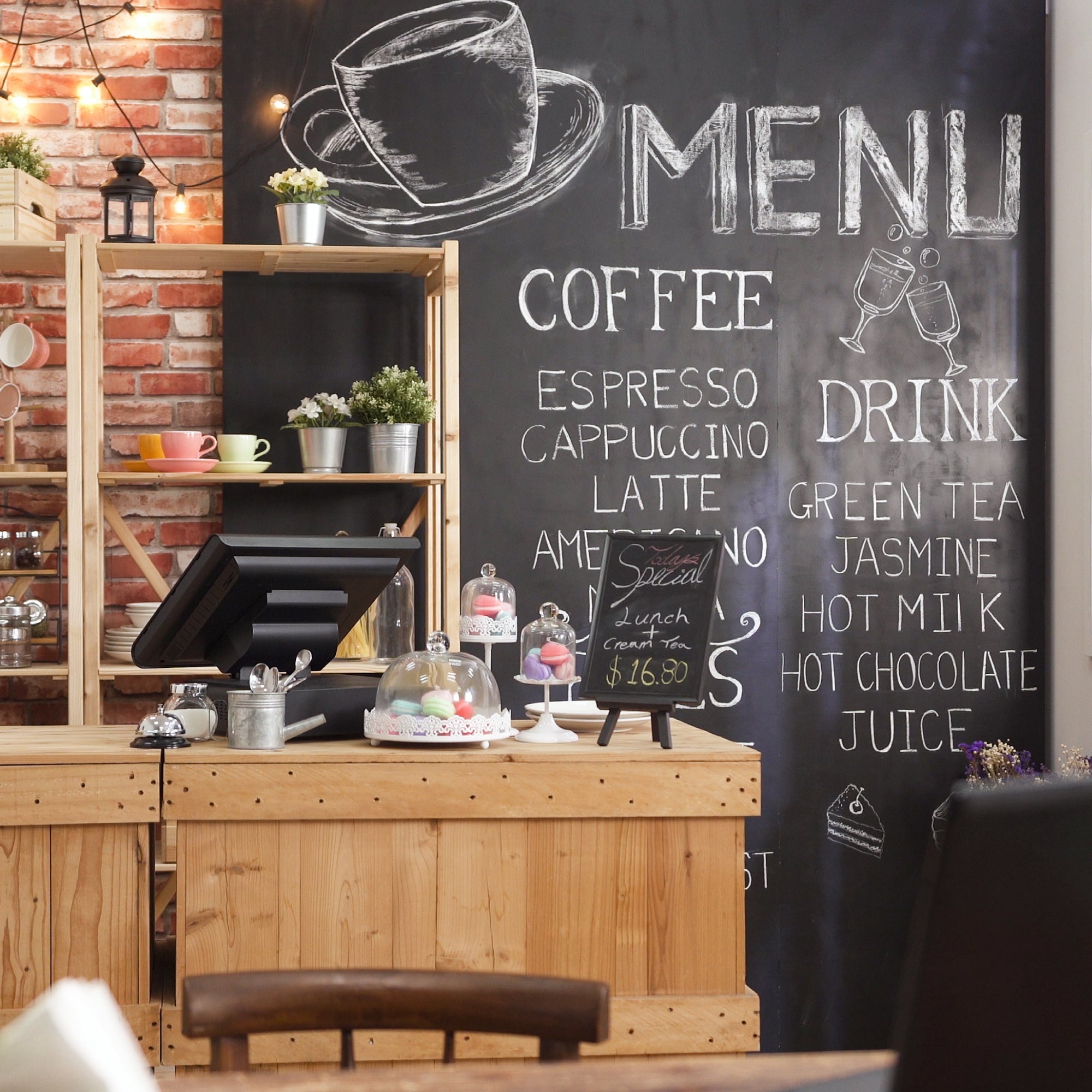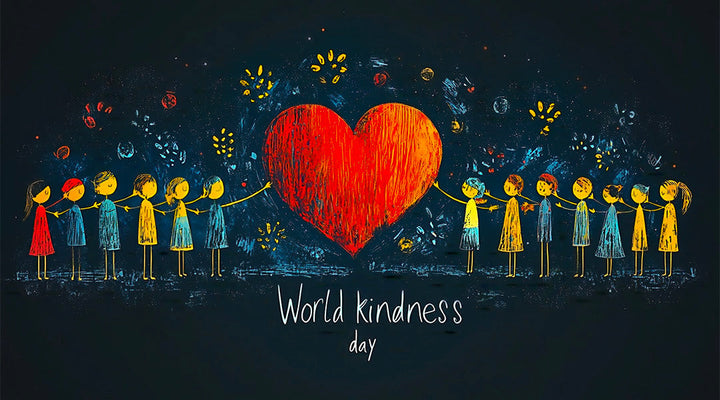
A Look at Coffee Houses - Bringing Change Through Bringing People Together
There’s a place of meeting so familiar, so relatable, that movies include this setting in the infancy of romance.
This backdrop I’m hinting at is so notably common that writers of one of the most popular television shows of all time anticipated an instant connection for viewers when they planted an orange sofa in the middle of this now iconic (though fictional) meeting place in New York City.

Not sure which familiar and relatable environment I’m referring to here?
Any Meg Ryan and Tom Hanks fans recall a barista in the background of Shopgirl and NY152’s first face-to-face encounter in You’ve Got Mail?
Or, do any Friends fans here remember that even Monica and Ross’s Nana enjoyed hanging out at Java Joe’s with “the gang?”
Ah yes, cafes, coffee shops, coffee houses, meeting places that have spanned generations…even long before mid-1930's, late teen/early twenties, Althea and her friends!
These fictional coffee houses don’t just give a nod to the fact that coffee is a timelessly popular beverage, but instead point to a tradition, a history rich in both coffee and community.
And, that rich history of community, of coming together in coffee houses, is what we’d like to explore here today.
So, grab a cup of your favorite brewed bean, and follow me on a journey through time to see how the gathering places surrounding this beloved beverage have impacted friends, communities, even history itself, for centuries!
The Hand That Opens The Coffee Shop Is The Hand That Changes The World

It’s probably not new news to most folks that saloons, bars, and/or taverns have historically been used as meeting places where townsfolk would gather, fellowship, discuss, and well…often deteriorate throughout the night.
But, what was one to do if they weren’t an imbiber, per say?
Enter, of course, the coffee house…
The first coffee shop has been traced back to Constantinople, circa 1550, where their initial popularity has been attributed to the sobriety of the practicing Muslim men of the day.
Having no need for alcohol, or a tavern, these Muslims are said to have begun a cultural tradition that would soon become as controversial as the happenings inside the taverns they sought to avoid.
Sure, bar room nightlife sparked controversies of the debaucherous kind, but the controversy I speak of here surrounds the kind that happens in coffee shops when minds meet apart from rowdy crowds, noisy rooms, and abundant inebriation.
In fact, it wasn’t long after coffee, and thus coffee houses, made their way to Europe that state and religious authorities sought to shut them down entirely, fearing the ramification of such meetings of the mind(s)!
What were these feared ramifications?
Effective change, that’s what!

Wherever there’s been coffee shops, there’s been change! Change in the areas of economics, politics, philosophy, then enlightenment and later rebellion, even revolution!
The early coffee shops in the Ottoman Empire intrigued philosophers, noting that not only the elites, but now a mixture of the classes of men were meeting to discuss news, religion, politics, and even gossip.
This mixing of the classes continued to baffle Europeans who soon gave coffee houses in London the nickname, “penny universities,” where the one cent price of a cup of coffee allowed men of all backgrounds to be involved in intellectual debate.
Due to this affordability, and now the intellectual gains to be had when communities gathered around a cup of joe, social norms began to erode, angering some of the ruling class.
In 1633, Sultan Murad IV made coffee drinking a capital offense when members of the country’s infantry killed his brother and uncle, said infantry members being notorious coffee house patrons (partakers of java and conversation).
Similar laws, even bans on coffee houses continued to be issued by Ottoman sultans even into the 18th century.

And in Europe, London’s society received a radical revolution when coffee houses, which allowed for patrons to come in and sit next to someone as their equal, flipped hierarchy and societal structure on its head.
Even more, coffee houses in Europe were demonized by the patriarchy when paranoia aroused fears of shared gossip and talk of politics going on in meeting places such as coffee shops.
In 1672, Charles II issued a proclamation, regarding the spread of “false news,” which contained the following pertaining to coffee shops: “men have assumed to themselves a liberty, not only in coffee houses, but in other places and meetings, both public and private, to censure and defame the proceedings of the State by speaking evil of things they understand not.”
Only a few years later, after dispersing spies throughout the coffee houses in London, Charles II even attempted to close all coffee houses in the city.
Obviously, coffee trumped Charles. In fact, the ban only lasted eleven days before connoisseurs of coffee and community prevailed over the edict.
Concerning enlightenment, Voltaire, Rousseau, and Newton were all said to have shared and developed ideas and philosophies surrounded by cups of coffee.
Journalists also were known to gather in coffee houses to gain information on the latest gossip, news, and current events to report.
The storming of the Bastille is said to have been plotted by revolutionaries in Paris cafes.
Then continuing in Europe, even the face of business evolved through community gatherings in coffee shops.
Successful businesses such as the London Stock Exchange, Lloyd’s of London insurance company, and Christie and Sothesby’s auction houses were each birthed around coffee house tables.
Then, as immigrants poured into America, the east coast found itself soon immersed in rightful revolution, booming business, and expansion of education and culture all through communities building and gathering in and around coffee houses.
In colonial times, the Boston Tea Party is said to have been a plan devised by the Sons of Liberty at the Green Dragon Tavern and Coffee House in Boston, also referred to as the Headquarters of the Revolution.
The earliest governmental documents of America were said to be thought up, and even read, in and near coffee houses.
The Declaration of Independence was read on the steps of the City Tavern, which was also known as the Merchant Coffee House in Philadelphia, Pennsylvania. It was also here that the First Continental Congress held its meetings.
Regarding American Economics, the New York Stock Exchange began in the Tontine Coffee House on Wall Street, the primary reason this street is a symbol of global finance.
But, business, politics, philosophy, and revolution aren’t the only things birthed out of or built in coffee houses!
Alongside a cup of coffee, cafes have been inviting and serving up culture as well!
Culture, Community, & Cafes

Aside from heated discussions and debates, rebellion and revolution, coffee houses have also provided public access to literature, poetry, art, and music.
Throughout the 17th and 18th century in Europe, historians and philosophers met in coffee shops to read and discuss ideas and literature of the day.
The Impressionists and Post-Impressionists of Europe were often said to have painted in and around coffee houses, even portraying cafes in their work.
Some of you may be familiar with Van Gogh’s Cafe Terrace At Night, depicting a French cafe with a crowd of people, no doubt gathering to share thoughts, ideas, and culture there as well.
Literature is another art often birthed when minds meet together in coffee houses, with poetry especially having been influenced by cafes and the gatherings that took place within them.
Sure, there’s an individuality in writing, but with coffee shops housing such a variety of patrons, we can’t escape the notion of such a community creeping into an author’s work wrought from a cafe chair.
In fact, Alexander Pope, an English poet and satirist, is said to have composed some of his most famous poetry out of gossip heard in a coffee house.
In America, before the popularity of coffee houses, upper class citizens were the primary audience for up and coming music and art talent.
But, as coffee shops spread to other areas, so did the talent showcased in them. And, with their relaxing atmosphere and smaller crowds (compared to larger venues), coffee houses were the perfect starting place for new talent.
Soon, because of coffee houses, middle class America was introduced to talented performers from racial backgrounds, ethnic groups, and remote rural areas they knew nothing of prior.
Now, the music often showcased in coffee houses has become so popular, so sought after, that an entire genre has been dedicated to it.
Coffee house music is often described as possessing a soft and edgy tone, but it includes such a wide variety with selections from acoustic, jazz, soft rock, even electric and alternative.
This range seems to embody what coffee shops have brought to society since their inception, a coming together of people, ideas, cultures, and personalities, gathering to provide, even create, community!
Even today, coffee houses and cafes continue to bring people together through the arts, from various walks of life.
A Cup Of Community

While we’ve seen the shaping of art, literature, music, even politics, economics, and society through the gatherings in coffee houses, there’s one more element here that I want to expound upon.
Researchers in the field of relationships tell us that friendships are formed and made through regular, unplanned interactions with members of a community.
As children, we often see this occur in school. Whether on the playground at recess, in the classroom, or when gathering for lunch, students have the opportunity to meet others and build bonds of friendship, meeting needs of socialization, most every day.
As adults, we have fewer opportunities for such interaction. And, perhaps that’s why coffee houses have been, and continue to be, such epicenters for building a sense of community.
Meetings at coffee houses, planned and random, as people tend to hang out for a bit when enjoying a delicious cup of joe, help us build social networks, as well as community values.
The caffeine component of coffee has been shown to improve mood, making individuals more friendly and sociable.
Even modern churches have been tapped into the community-enhancing qualities of coffee shops, putting small cafes in their facilities to promote fellowship and communication amongst members and visitors alike.
We all know it’s a common practice, meeting friends, family, or partners at coffee shops to talk, laugh, and share life with one another for a bit. But, do we take for granted the sense of community found there?
When’s the last time you met up with colleagues to discuss a project over a cup of coffee?
Have you been to a local coffee shop lately to check out the new musical or artistic talent showcased there?
You can even bring that coffee house experience closer to home, as a growing trend involves inviting neighbors or groups of friends over for some coffee, communication, community, and care!
Maybe raucous rebellion isn’t your cause. And, perhaps you’re not looking to pen the great American novel, but let’s not underestimate or neglect the power of coming together with others, building community…even (and especially) around a cup of coffee.
Check out Lifeboost Coffee Medium Roast.
- https://studyfinds.org/best-tv-shows-friends-seinfeld/
- https://ilovetheupperwestside.com/movies-filmed-on-the-upper-west-side/
- https://www.britannica.com/topic/cafe-eating-and-drinking-establishment
- https://www.history.com/news/coffee-history-facts
- https://www.history.com/news/coffee-houses-revolutions
- https://conversational-leadership.net/coffee-houses/
- https://blogs.loc.gov/folklife/2014/04/coffeehouses-folk-music-culture-and-counterculture/
- https://www.battlefields.org/learn/head-tilting-history/sip-sip-hurrah-how-coffee-shaped-revolutionary-america
- https://sites.udel.edu/britlitwiki/the-coffeehouse-culture/
- https://www.dailyartmagazine.com/intersection-of-coffee-and-creating-coffee-shops-and-their-purpose/
- https://www.coffeeforless.com/blogs/coffee-for-less-blog/coffee-shop-music-as-a-genre
- https://www.inc.com/jessica-stillman/psychology-relationships-adult-friends.html#
- https://www.coffeeandhealth.org/coffee-and-caffeine/coffee-socialising
- http://blog.practicalethics.ox.ac.uk/2018/05/coffee-with-colleagues-caffeine-is-a-social-enhancer/
- References for the article to confirm data and information.










